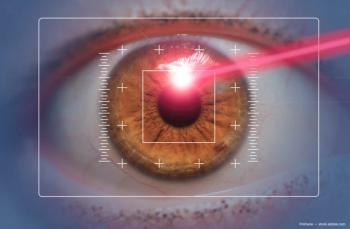
- Ophthalmology Times: September/October 2025
- Volume 50
- Issue 5
Transformative advances in vision research: It’s the science
Key Takeaways
- Imaging technology advancements have significantly improved disease diagnosis and treatment efficacy assessment in ophthalmology.
- AI is transforming ophthalmology by enhancing image analysis and revealing previously undetectable retinal traits.
Deborah A. Ferrington, PhD, highlights how breakthroughs in imaging, AI, and stem cell research are reshaping ophthalmology.
As part of Ophthalmology Times’ 50th anniversary celebration, leaders in the field are reflecting on the transformative role of science and research in advancing eye care. Deborah A. Ferrington, PhD—chief scientific officer and the Stephen J. Ryan–Arnold and Mabel Beckman Foundation Endowed Presidential Chair at Doheny Eye Institute in Pasadena, California, and a professor in residence at David Geffen School of Medicine at UCLA in Los Angeles, California—points to the significance of advances in imaging technologies, artificial intelligence (AI), and stem cell research as milestones that have redefined diagnosis, treatment, and discovery in ophthalmology.
Ophthalmology Times caught up with Ferrington to discuss the innovations that stand out most and her hopes for the future of vision research.
Note: This transcript has been edited lightly for clarity and length.
When you think back over the past few decades, what breakthroughs or innovations in ophthalmology stand out to you as the most exciting or important?
Deborah A. Ferrington, PhD
There are 3 that come to mind. One is the technology involved in imaging the eye has advanced so very quickly. I remember back when I first started in ophthalmology and vision research—optical coherence tomography was about the only advanced imaging modality that was available. But now we have all kinds of different techniques that have been developed over the past decade, and I think that has allowed us a more refined way to diagnose disease and also to follow whether the efficacy of treatments is as positive or not. That’s been super important.
The other development—more recently and one that is blossoming right now—is AI and its use in ophthalmology. Specifically, reading those images to again diagnose disease or find traits in the retina that were not obvious to humans previously and actually can be used in more refined ways to diagnose disease.
Finally, for basic scientists, the development of induced pluripotent stem cells and their use in ophthalmology and vision research have moved the field forward.
What changes have you observed in this area?
Ferrington
Early in my career, I used primary cultures of retinal pigment epithelial cells from human donor tissue. First of all, it’s very expensive, but the limitations of using primary cultures prevented us, oftentimes, from completing studies. The use of induced pluripotent stem cells that are then differentiated into retinal pigment epithelial cells, which is what my lab uses now, has been a huge advantage in allowing us to study in depth the disease mechanism.
Looking ahead, what gives you the most hope for how the diagnosis and the treatment of retinal diseases might evolve in the future?
Ferrington
There are a lot of retinal diseases that still do not have any kind of treatment. I am thinking in particular of the inherited retinal diseases like retinitis pigmentosa. We are only scratching the surface in understanding what is causing those different diseases, and sometimes there are different mechanisms. Even though the disease might be called retinitis pigmentosa, there are different mechanisms. A lot of work needs to go into that.
Even in geographic atrophy of age-related macular degeneration, 2 drugs were recently approved by the FDA. Both target specific proteins within the complement pathway. I think we have to expand our horizons in thinking about what is causing geographic atrophy and come up with some other drugs because the drugs themselves, while statistically significant in the improvement, did not improve everyone’s retinal function, so we need other drugs in that arena also.
Then there is diabetic retinopathy and all the other retinal diseases that I could go on and on naming. Lots of work needs to be done in first understanding a mechanism and then going after the targets for which you could develop drugs.
Articles in this issue
about 1 month ago
Anti-VEGF innovations in retinal disease: From molecules to medicineabout 1 month ago
From numbers to meaning: Graphical reporting in refractive surgeryabout 2 months ago
Evolving glaucoma therapy: A new era of interventional strategiesabout 2 months ago
Proactive strategies and sustained delivery advance glaucoma careabout 2 months ago
Periorbital rejuvenation: Past, present, and nextabout 2 months ago
The mechanics of presbyopia: From muscle movement to functional visionabout 2 months ago
Rethinking punctal occlusion as an option for allergic conjunctivitisNewsletter
Don’t miss out—get Ophthalmology Times updates on the latest clinical advancements and expert interviews, straight to your inbox.















































.png)


